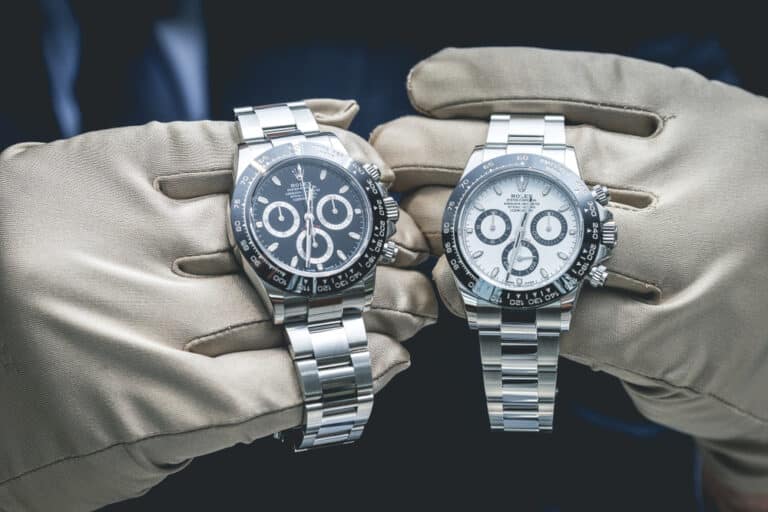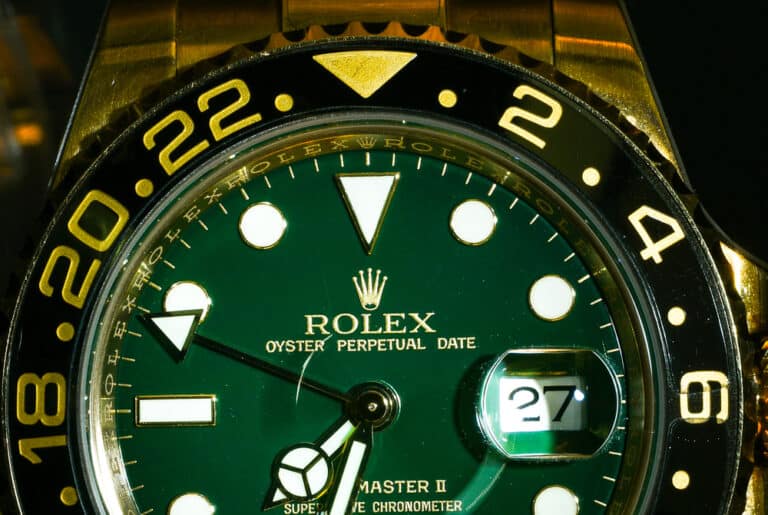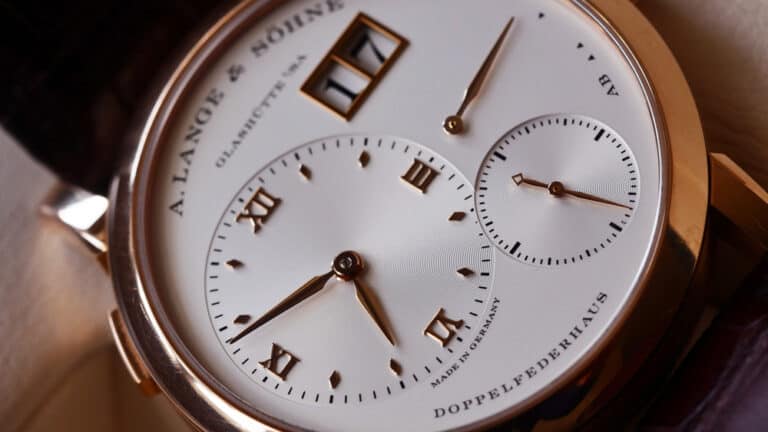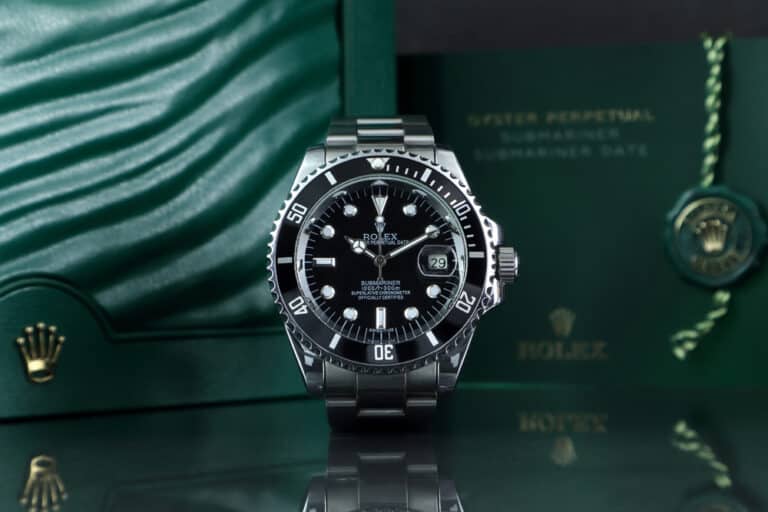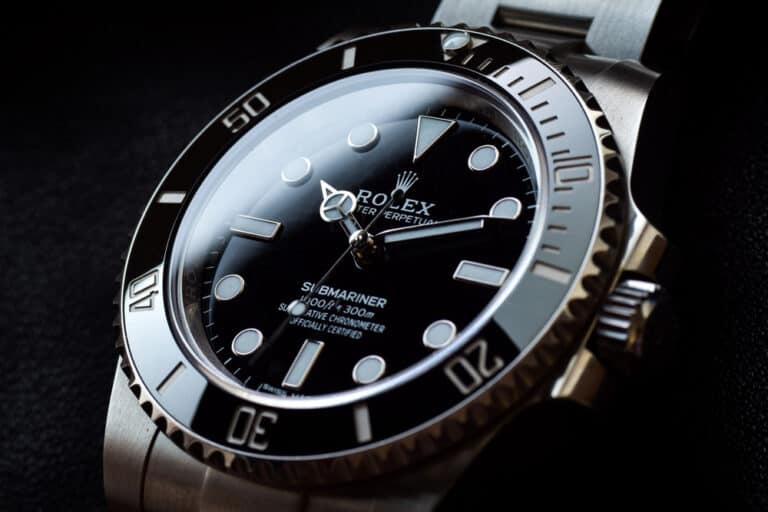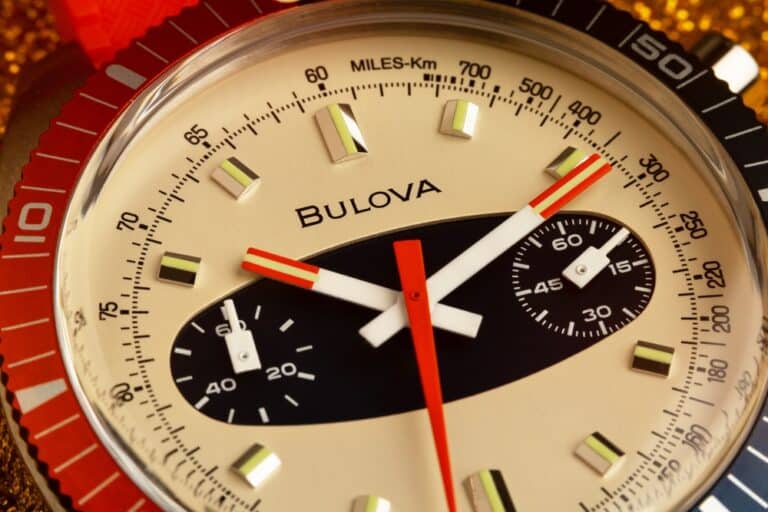Editorial credit: Portal Satova / Shutterstock.com
NATO straps are some of the world’s most famous watch bands, and it isn’t hard to see why. You can find these straps in leather, plastic, or even waterproof nylon varieties, and they’re adjustable too – but that can be not very clear. So, then how tight should a NATO strap be on my wrist?
A NATO strap should not choke your wrist nor be so loose that it swings or twists around if your arm moves. Typically, your NATO strap is tight enough when you can slip a single finger between the clasp and your wrist. However, the ideal fit is whichever feels most comfortable for you.
Now that we know how tight should a watch be, we can examine this topic in more detail. Read on to learn the basics of NATO straps and how to ensure that you always have a comfortable watch fit. Not only that, but this post will also tell you why NATO straps might be the perfect watch band for you.
How Tight Should I Make My NATO Strap?
There’s no hard and fast regulation about how tight your NATO band ought to be; instead, pick what is most comfortable for your wrist. After all, you’re the one who must wear the watch.
Nevertheless, there’re a couple of approaches to a strap’s tightness. We’ve found that most timepieces neatly fit when they’re secure on your arm. Tighten your NATO strap until you can only slip one finger between the band and your wrist.
Your timepiece has some leeway, but it won’t slip around much.
It’s the best of both worlds. Your watch won’t choke your arm or press uncomfortably on your bones. Similarly, it won’t be so loose that it’ll flip around or bump against your hand.
However, that’s not the only way to wear your watch. Some people enjoy it when their watch sits loosely on their arm and rests on their hand. Nevertheless, we don’t think that style is correct for a NATO strap timepiece.
See, NATO watch straps, while they can be colorful or use quality leather, aren’t flashy in the way a metal band can be. So, maximizing the amount of the watch band that others can see isn’t a wise fashion choice. Likewise, your watch won’t fit nearly under your sleeve.
On the other hand, you could wear a NATO strap with the watch face on your inner wrist. Usually, you’d keep the leather strap tight. That way, you could always flip your hand over and immediately check the time.
Unfortunately, that means that others can’t admire your nice watch.
Because of that, we think that moderate tightness is perfect for NATO straps. It’s a good compromise.
How To Adjust A NATO Strap?
You can adjust your NATO strap like you’d adjust your belt. Unhook the pin from the hole you usually slot it into, and then slide it up or down the material until you have a good fit. Yes, it’s that straightforward.
Don’t worry if you now have excess material left over. You can slide the tail end of the strap into the available loops – just like you would when wearing a belt.
Depending on the length of your NATO strap, that might become unwieldy, though. In that case, it’s best to ensure that you’ve chosen the correct method of attaching your strap to the watch. Because NATO straps are so versatile, you can loop them onto the case in several ways. Each looks slightly different and exposes a varying amount of the band.
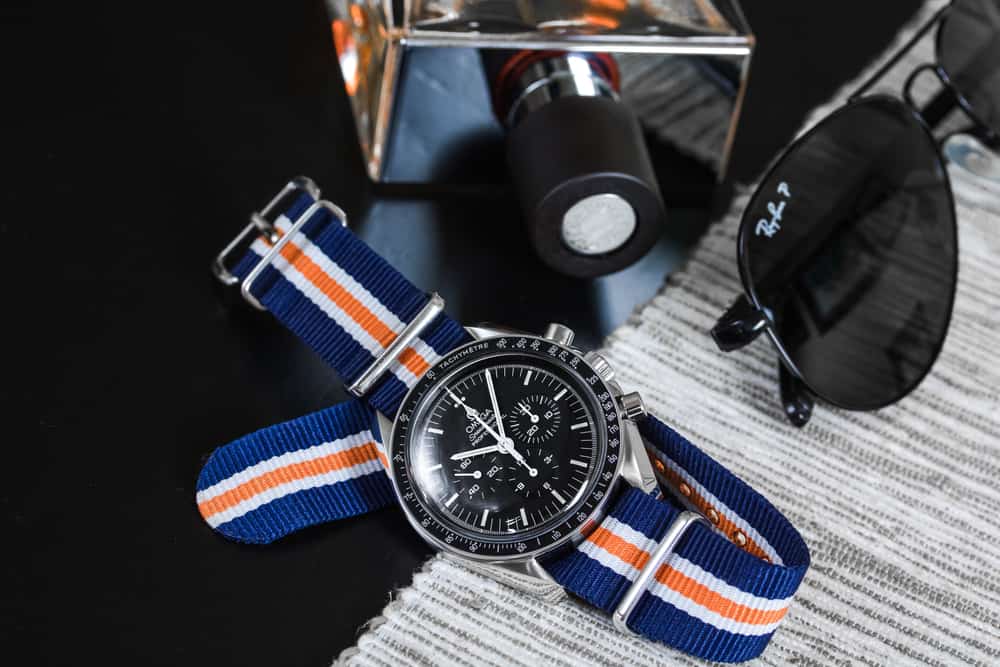
Why Is Having A Good Watch Fit Important?
Watches are like shoes; you’ll probably wear them daily. Because of that, your timepiece must fit comfortably on your arm, regardless of the strap style.
First, a good watch fit matters because of the comfort factor. Nobody wants to have a sore hand or arm, so ensuring that your watch fit won’t hurt you is essential.
If your watch is too loose, it can slip and bump around as you move. For right-handed people, the crown will press sharply against your hand. Over time, that can cause a callus or a bruise.
Similarly, a tight watch creates pressure on your forearm. It can leave a nasty red mark when you remove it. That’s because an overly close strap interferes with your blood circulation.
Furthermore, a poor watch fit can also damage the watch. If you leave your NATO strap watch loose, you risk knocking your timepiece against other objects. Depending on your lifestyle, that behavior threatens to scratch the face.
You could remove the watch before working with your hands or playing sport – many people do – but it is also annoying to remember to put it back on afterward.
How tight should a watch fit? If your watch is too tight, you could also bend the pushpins. Those devices connect the watch strap to the case. So, if your band is too restrictive, it can pressure them, damaging the watch.
Last, keep in mind the weather also affects your watch’s tightness. Your body becomes slightly thicker during hot weather, so your strap feels tighter. Similarly, it’s unpleasant to have a timepiece pressing against your sweaty forearm. So, remember to loosen your NATO strap during summer.
Why Should I Get A NATO Strap?
NATO straps aren’t only fashionable; they’re also practical.
As we’ve shown, adjusting a NATO strap is effortless. You don’t require a horologist’s tools or training.
Not only that, but the nylon versions of NATO straps are waterproof. That makes them an excellent alternative to a metal or rubber strap if you’re a diver or swimmer.
NATO straps are also reliable. As well as using durable material, NATO straps also have more than one failsafe. Unlike other bands that come free if one lug breaks, NATO straps have several.
Because you loop them under the case and then double them back over, the strap doesn’t rely on any specific lug or pushpin. So, if you damage your watch, it’ll nevertheless stay safe on your wrist until you notice and can have it repaired.
Conclusion
NATO straps should be comfortable on your wrist size, neither too loose watch nor too tight. Instead, they fit well when you can slide one finger between the case and your arm.
References
- NATO Watch Straps: A Guide on How to Adjust It – Grayton (graytonwatches.com)
- Nato Watch Straps Explained | KeepTheTime.com
- How Tight Is Your Watch? Wearing Comfort Tips For More Fun (prisma.watch)
- How To Wear Your Watch Band – Everest Horology Products (everestbands.com)
- How tight should a watch fit? Complete Guide – WRISTPORN
- What Is a NATO Watch Strap? – Horus Straps
- NATO Strap Guide | What are NATO Watch Straps? – Nixon US

